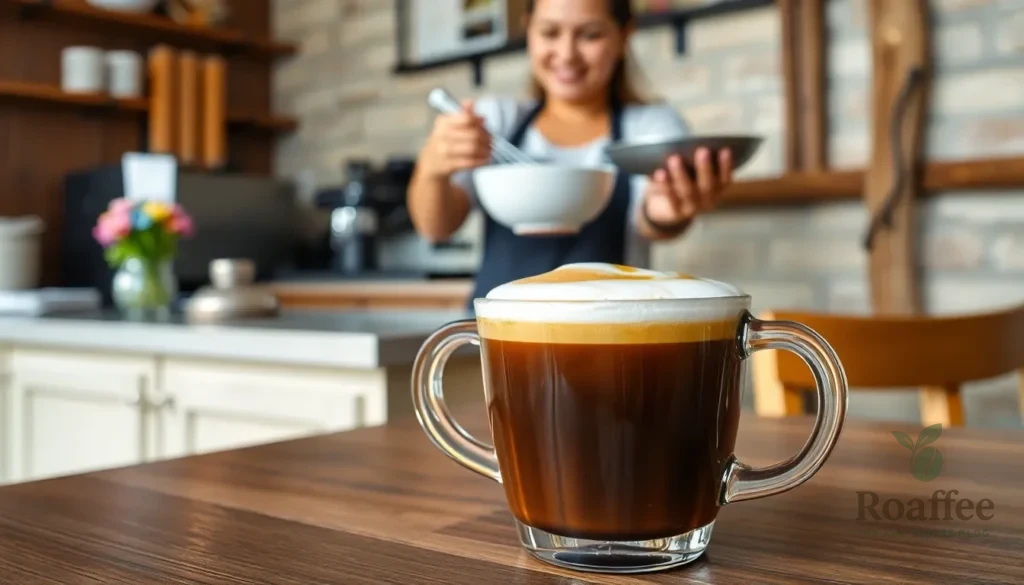We’ve discovered one of Vietnam’s most beloved coffee innovations that’ll transform your morning routine forever. Vietnamese egg coffee combines the rich boldness of dark roast coffee with a silky-smooth egg cream that creates an indulgent café experience right at home.
This iconic drink originated in 1940s Hanoi when milk was scarce and creative baristas began whipping egg yolks with sugar and condensed milk to create a luxurious coffee topper. The result? A velvety cloud of sweetened egg cream that floats beautifully on robust Vietnamese coffee.
What makes this recipe special isn’t just its fascinating history – it’s the incredible contrast between the bitter coffee and sweet creamy foam that creates a truly unforgettable flavor profile. We’ll show you exactly how to achieve that perfect balance and master the traditional whisking technique that gives egg coffee its signature texture.
Ingredients
Creating authentic Vietnamese egg coffee requires simple yet exact ingredients that work together to achieve the perfect balance of bold coffee and luxurious cream. We’ll separate the components to ensure you gather everything needed for both the robust coffee base and the signature egg foam.
For the Coffee Base
- 2 tablespoons Vietnamese dark roast coffee grounds (coarsely ground)
- 1 cup hot water (195-205°F)
- 1 tablespoon sweetened condensed milk
- 1 teaspoon granulated sugar (optional for extra sweetness)
For the Egg Cream
- 1 large egg yolk (room temperature)
- 2 tablespoons sweetened condensed milk
- 1 tablespoon granulated sugar
- 1 teaspoon vanilla extract (optional)
- Pinch of salt
Equipment Needed
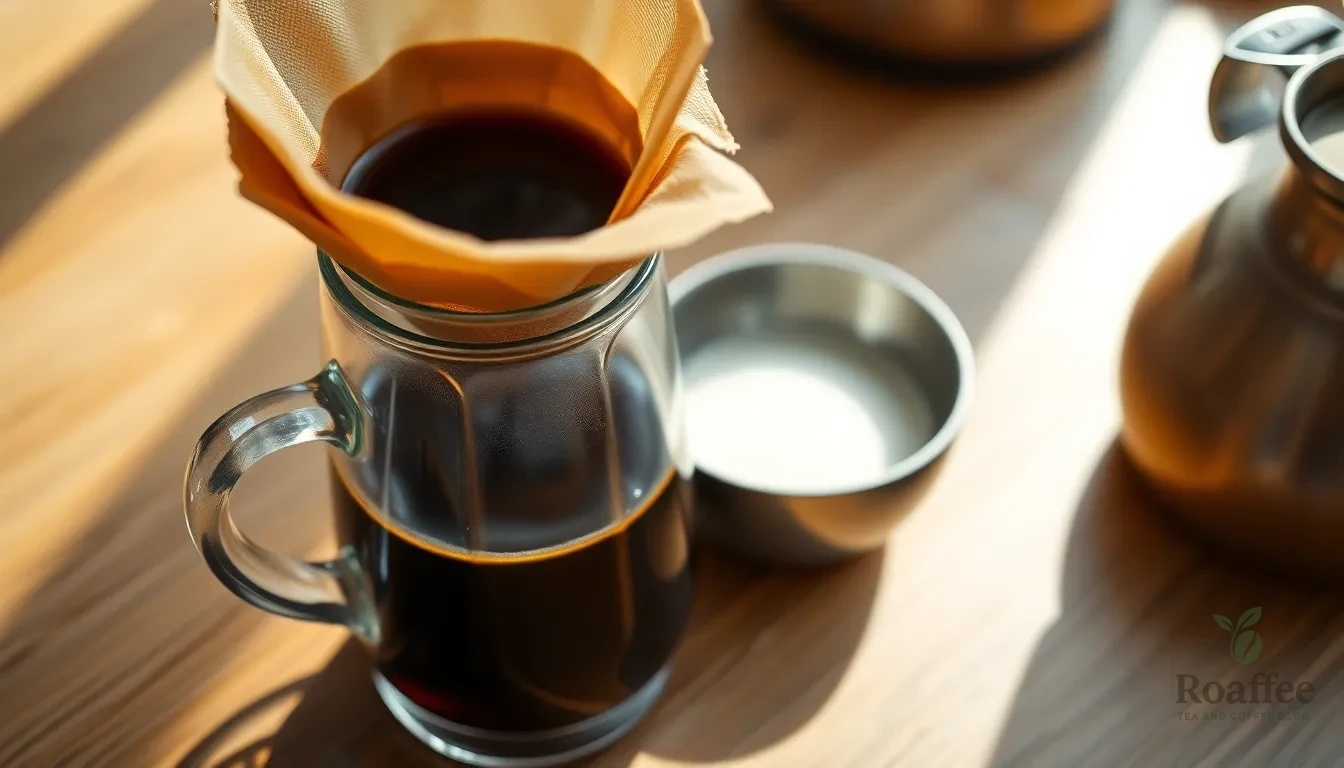
Creating the perfect Vietnamese egg coffee requires exact tools that ensure proper brewing and the signature fluffy egg foam. We recommend gathering these essential items before beginning your coffee adventure.
Vietnamese Coffee Filter (Phin) stands as the most crucial piece of equipment for authentic preparation. This traditional metal filter creates the strong coffee base that defines Vietnamese egg coffee. If you don’t have a phin filter available, we can substitute with instant Vietnamese coffee for convenience.
Small Deep Bowl or Heatproof Bowl becomes essential for creating the egg mixture. Pyrex or metal bowls work best as they can withstand the heat during the tempering process. The deep sides prevent splashing while whisking vigorously.
Whisk transforms the egg yolk mixture into its signature fluffy texture. We can use either a hand whisk for traditional preparation or an electric hand frother for quicker results. The choice depends on your preference and available time.
Pot or Kettle provides the boiling water necessary for brewing strong coffee. Water temperature should reach 195-205°F for optimal extraction from the coffee grounds.
Glass Coffee Mugs enhance the visual appeal of this layered drink. Clear glasses allow us to appreciate the beautiful contrast between the dark coffee base and the light egg foam floating on top.
Double Boiler Setup offers optional but recommended equipment for food safety. We can create this using a saucepan with a heatproof bowl placed on top. This setup allows us to temper the egg mixture safely by heating it to 160°F for pasteurization while maintaining the creamy texture.
Having these tools ready ensures smooth preparation and helps achieve the authentic Vietnamese egg coffee experience with its perfect balance of strong coffee and luxurious egg cream.
Instructions
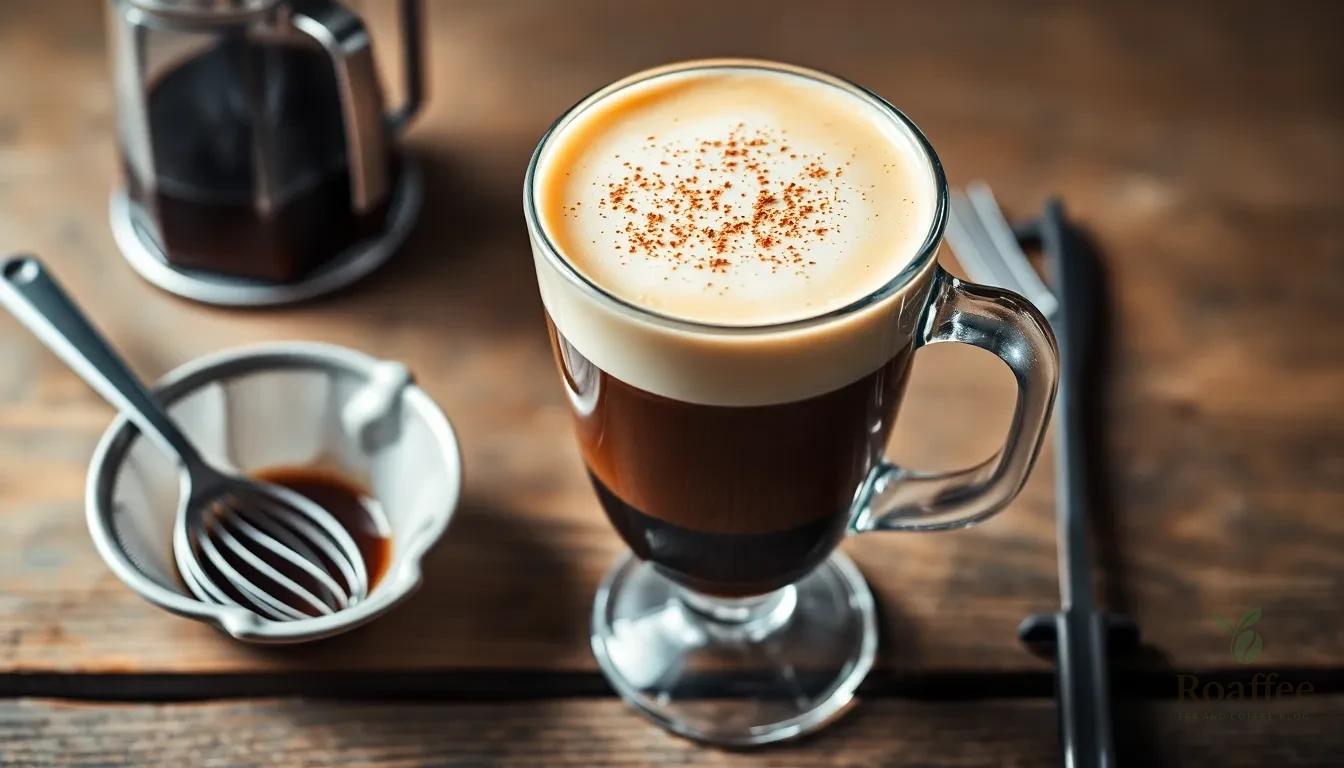
Follow these step-by-step instructions to create the perfect Vietnamese egg coffee with its signature creamy foam and robust coffee base. We’ll guide you through each stage to ensure you achieve the authentic texture and flavor balance.
Preparing the Coffee Base
Start by brewing 3 ounces of strong Vietnamese coffee using your phin filter. Place the coarsely ground dark roast coffee in the filter and slowly pour hot water (195-205°F) over the grounds. Allow the coffee to drip slowly through the filter for about 4-5 minutes to create a concentrated base.
If you don’t have a phin filter, brew a strong espresso shot or use a French press with a 1:4 coffee to water ratio. The coffee should be intensely flavored and dark to balance the sweetness of the egg cream.
Keep the brewed coffee hot while you prepare the egg mixture. Pour it into your serving glass and add sweetened condensed milk if desired for extra richness.
Making the Egg Cream
Set up a double boiler by placing a heatproof bowl over a pot of simmering water. Separate your egg yolks carefully and place them in the bowl along with 1 tablespoon of sweetened condensed milk and 1 teaspoon of granulated sugar.
Whisk the mixture continuously over medium heat for approximately 5 minutes until it thickens and coats the back of a spoon. The mixture should reach 160°F to ensure pasteurization and food safety.
Remove the bowl from heat and whisk in the vanilla extract. Using a handheld mixer, beat the mixture for 2-3 minutes until it becomes light, fluffy, and doubles in volume. The texture should be thick and creamy like a custard.
Assembling the Vietnamese Egg Coffee
Pour the hot brewed coffee into a clear heatproof glass to showcase the beautiful layers. The coffee should fill about two-thirds of the glass.
Gently spoon the fluffy egg cream mixture over the coffee surface. The egg foam should float on top, creating a distinct layer that contrasts beautifully with the dark coffee below.
Dust lightly with ground cinnamon if desired for extra flavor and visual appeal. Serve immediately with a small spoon so you can enjoy both the creamy top layer and the strong coffee base together.
| Step | Temperature | Time |
|---|---|---|
| Coffee brewing | 195-205°F | 4-5 minutes |
| Egg mixture heating | 160°F | 5 minutes |
| Whisking to fluff | Room temp | 2-3 minutes |
Serving Suggestions
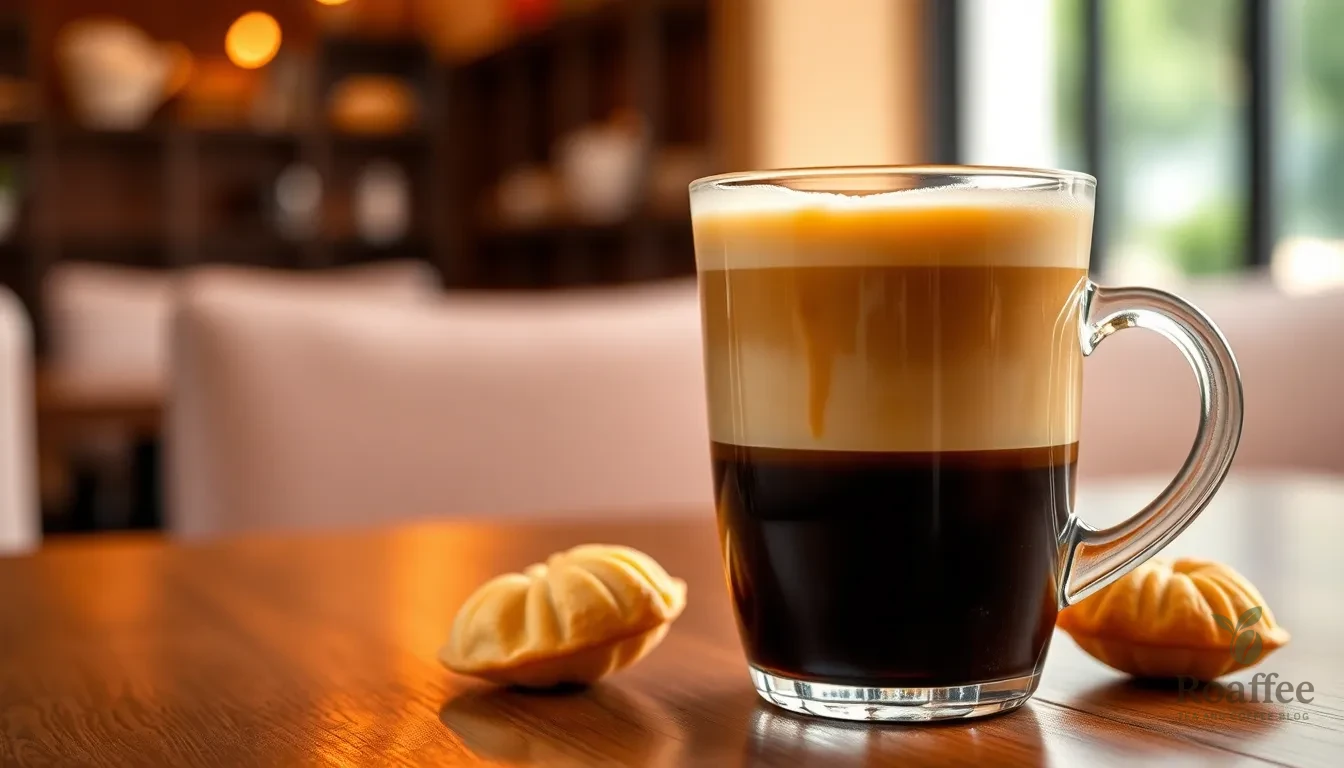
Vietnamese egg coffee deserves presentation that matches its luxurious flavor profile. We recommend serving this indulgent drink in clear glass cups to showcase the beautiful contrast between the dark coffee base and the golden egg cream floating on top. The visual appeal enhances the overall experience and creates an Instagram-worthy moment for your guests.
Traditional Vietnamese cafes serve egg coffee as a dessert-style beverage rather than a quick morning pick-me-up. We suggest enjoying it during leisurely afternoon breaks or as an after-dinner treat when you can savor each creamy spoonful. The rich texture and sweet flavor make it perfect for special occasions or when you want to impress coffee-loving friends.
Pairing Vietnamese egg coffee with light pastries creates an authentic cafe experience. We find that delicate Vietnamese sweets complement the drink’s richness without overwhelming the palate. French macarons, butter cookies, or even simple shortbread biscuits work beautifully alongside the creamy coffee creation.
Temperature plays a crucial role in serving Vietnamese egg coffee properly. We always serve it immediately after assembly while the coffee remains hot and the egg cream maintains its fluffy texture. The temperature contrast between the warm coffee and cool egg foam creates a delightful sensory experience that defines this unique beverage.
For enhanced presentation, we recommend dusting the egg cream with a light sprinkle of cinnamon or cocoa powder before serving. This final touch adds visual appeal and introduces subtle flavor notes that complement the existing sweetness. A small spoon accompanies each serving to allow guests to gently stir the layers together or enjoy them separately according to their preference.
Storage and Make-Ahead Tips

We strongly recommend preparing Vietnamese egg coffee fresh for the best taste and safety. The delicate egg foam requires immediate consumption since raw egg yolks are used in the preparation.
Coffee Base Preparation
Our coffee base can be brewed ahead of time without compromising quality. We suggest keeping the brewed Vietnamese coffee hot in a thermal carafe or warming it gently before serving. Cold coffee works well too if you prefer an iced version of this traditional drink.
Egg Cream Safety Guidelines
Fresh egg yolks demand careful handling for food safety. We always use the freshest possible eggs from our refrigerator and consume the drink immediately after preparation. The frothy egg mixture should never be stored or made in advance due to the raw egg content.
Ingredient Storage Best Practices
| Ingredient | Storage Method | Duration |
|---|---|---|
| Egg yolks | Refrigerated | Use same day |
| Sweetened condensed milk | Refrigerated after opening | 1-2 weeks |
| Vietnamese coffee powder | Airtight container | 2-3 weeks |
| Brewed coffee | Thermal carafe or refrigerated | 2-3 hours hot, 24 hours cold |
Equipment Preparation
We recommend having all equipment clean and ready before starting. Our whisk and mixing bowl can be chilled in the refrigerator for 10 minutes before use to help achieve better foam stability. The double boiler setup ensures safe egg preparation while maintaining the creamy texture we desire.
Optimal Consumption Timeline
Vietnamese egg coffee delivers the best experience when enjoyed within 5 minutes of preparation. The egg foam begins to deflate after this time, reducing the signature texture contrast between the bitter coffee and sweet cream. We always serve guests immediately after assembling the drink to preserve the visual appeal and taste quality.
Variations and Customizations

Vietnamese egg coffee offers endless possibilities for customization to suit your taste preferences and seasonal moods. We’ll explore the most popular variations that transform this classic drink into new experiences.
Hot Vietnamese Egg Coffee
Hot Vietnamese egg coffee represents the traditional preparation method that delivers the most authentic experience. We follow the classic technique by brewing strong Vietnamese coffee using a phin filter and creating a rich egg foam with sweetened condensed milk. The hot coffee base provides the perfect foundation for the fluffy egg cream to float elegantly on top.
For the best results, we ensure the coffee temperature reaches 195-205°F when serving. The heat helps maintain the egg foam’s texture while creating a delightful temperature contrast between the warm coffee and creamy topping. Adding a small amount of the hot brewed coffee to the egg mixture helps temper the eggs safely while maintaining the signature fluffy consistency.
Iced Vietnamese Egg Coffee
Iced Vietnamese egg coffee transforms this indulgent drink into a refreshing summer treat. We start by brewing espresso or strong coffee and allowing it to cool slightly before pouring over ice cubes and cold milk. The egg foam preparation remains similar, with egg yolks whipped with sweetened condensed milk and a touch of vanilla extract for enhanced flavor.
The key difference lies in the assembly process. We pour the cold coffee mixture over ice first, then gently float the whipped egg foam on top. This method creates beautiful layers that remain distinct in the cold temperature. Optional garnishes like cocoa powder add visual appeal and complement the rich flavors.
Flavor Variations
Flavor variations allow us to personalize Vietnamese egg coffee according to individual tastes and preferences. We can enhance the egg foam with vanilla extract, cinnamon, or cocoa powder for additional depth and complexity. These additions transform the basic recipe into exciting new flavor profiles.
| Flavor Addition | Preparation Method | Taste Profile |
|---|---|---|
| Vanilla Extract | Add 1/2 teaspoon to egg mixture | Sweet and aromatic |
| Cinnamon | Whisk 1/4 teaspoon into egg foam | Warm and spicy |
| Cocoa Powder | Fold 1 tablespoon into egg mixture | Rich and chocolatey |
| Pasteurized Custard | Heat egg mixture in double boiler with sugar | Silky and luxurious |
For a more sophisticated approach, we can create a pasteurized version by heating the egg yolks with sugar and condensed milk over a double boiler. This technique produces a silky custard consistency that offers enhanced food safety and a more refined texture. The preparation method requires careful temperature control but delivers restaurant quality results.
Different whisking techniques also create texture variations. We can use hand whisking for a rustic approach, an electric mixer for consistent results, or a milk frother for quick preparation. Each method produces slightly different foam densities that affect the final drinking experience.
Tips for Perfect Results
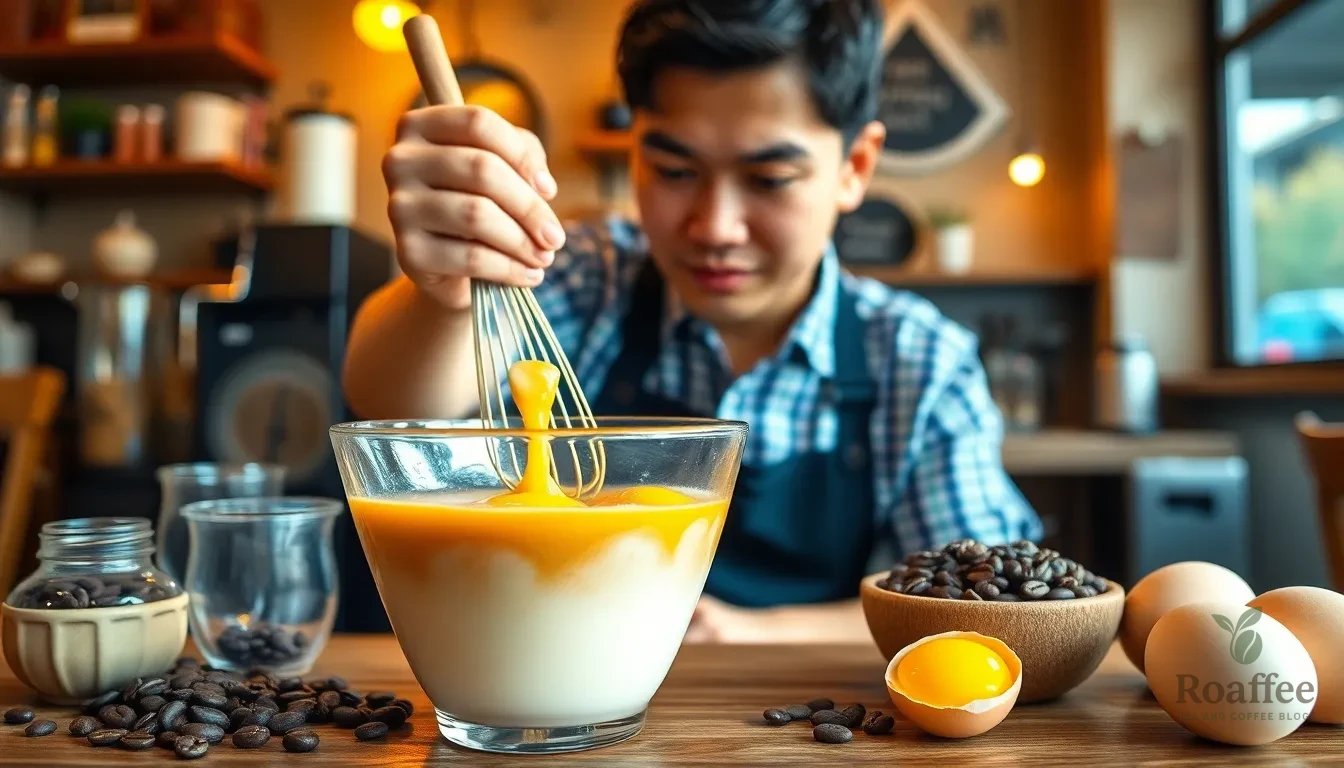
Room temperature eggs provide the foundation for achieving the ideal frothy texture in Vietnamese egg coffee. We recommend removing eggs from the refrigerator 30 minutes before preparation to ensure optimal whisking performance and prevent the egg mixture from shocking when combined with warm ingredients.
Preheating your serving glasses creates a crucial temperature barrier that keeps the drink hot longer. We fill clear glass mugs with hot water while brewing the coffee, then empty and dry them just before assembly. This simple step maintains the perfect drinking temperature and prevents the egg foam from deflating quickly.
Vigorous whisking transforms ordinary egg yolks into the signature custard-like foam that defines authentic Vietnamese egg coffee. We use an electric mixer when possible to achieve maximum fluffiness, beating the egg yolks and sweetened condensed milk for 3-4 minutes until the mixture reaches a light, airy consistency. Hand whisking works but requires persistent effort for 5-7 minutes to achieve similar results.
| Whisking Method | Time Required | Texture Result |
|---|---|---|
| Electric mixer | 3-4 minutes | Light and airy |
| Hand whisking | 5-7 minutes | Dense but creamy |
| Double boiler method | 4-5 minutes | Smooth and pasteurized |
Traditional Vietnamese phin filters deliver the most authentic flavor profile for the coffee base. We recommend brands like Trung Nguyên or Cafe Du Monde for genuine Vietnamese coffee taste, though strong espresso or French press alternatives work well when phin filters are unavailable. The key lies in achieving a concentrated coffee that can support the egg foam without diluting the overall flavor.
Double boiler technique ensures food safety while creating the perfect egg cream consistency. We heat the egg mixture to 160°F while whisking continuously, which pasteurizes the eggs and creates a silky smooth texture. This method requires careful temperature monitoring but produces professional-quality results with enhanced safety.
Immediate serving preserves both the visual appeal and optimal taste experience of Vietnamese egg coffee. We assemble the drink quickly after brewing, as the egg foam maintains its best texture for only 5 minutes after preparation. The temperature contrast between hot coffee and creamy egg foam creates the signature sensory experience that makes this beverage special.
Fresh ingredients make a noticeable difference in the final product quality. We use eggs within their expiration date and sweetened condensed milk that has been properly stored. Room temperature ingredients blend more easily and create better foam stability than cold components straight from the refrigerator.
Garnishing with ground cinnamon or cocoa powder adds both visual appeal and complementary flavors to the finished drink. We dust the egg foam lightly just before serving, creating an elegant presentation that enhances the overall coffee experience. A small spoon allows guests to mix the layers or enjoy them separately according to their preference.
Conclusion
We’ve shared everything you need to create this remarkable Vietnamese coffee experience in your own kitchen. The key to success lies in quality ingredients fresh eggs room temperature preparation and that all-important vigorous whisking technique.
This isn’t just another coffee drink – it’s a piece of culinary history that transforms your morning routine into something truly special. The contrast between robust coffee and silky egg cream creates a flavor profile that’s both comforting and indulgent.
Remember to serve immediately while the coffee’s hot and the foam’s at its fluffiest peak. With practice you’ll master the traditional whisking technique and soon be creating café-quality Vietnamese egg coffee that rivals any Hanoi coffee shop.
Frequently Asked Questions
What is Vietnamese egg coffee?
Vietnamese egg coffee is a unique coffee drink that combines dark roast coffee with a creamy foam made from egg yolks, sugar, and condensed milk. It originated in 1940s Hanoi when milk was scarce, and baristas created this indulgent alternative by whipping egg yolks to create a sweet, velvety topping that contrasts beautifully with the bitter coffee base.
What ingredients do I need to make Vietnamese egg coffee?
For the coffee base, you’ll need 2 tablespoons of coarsely ground Vietnamese dark roast coffee, 1 cup of hot water, and 1 tablespoon of sweetened condensed milk. For the egg cream, gather 1 large room temperature egg yolk, 2 tablespoons of sweetened condensed milk, 1 tablespoon of granulated sugar, and optionally vanilla extract and a pinch of salt.
What equipment is essential for making Vietnamese egg coffee?
You’ll need a Vietnamese coffee filter (phin) for brewing, a small deep bowl for mixing, a whisk for creating the foam, and a pot for boiling water. Clear glass coffee mugs enhance the visual appeal, and a double boiler setup is recommended for safely tempering the egg mixture while maintaining the creamy texture.
How do I make the egg foam for Vietnamese egg coffee?
Set up a double boiler and whisk the egg yolks, sweetened condensed milk, and sugar until the mixture becomes thick and fluffy. The double boiler ensures food safety while creating a smooth, creamy texture. Whisk vigorously for several minutes until the mixture reaches the desired consistency and light color.
Can I make Vietnamese egg coffee ahead of time?
Vietnamese egg coffee should be prepared fresh for the best taste and safety. While the coffee base can be brewed ahead and kept hot, the egg cream should not be stored due to food safety concerns. The drink is best enjoyed within 5 minutes of preparation to preserve the texture and visual appeal.
Is there an iced version of Vietnamese egg coffee?
Yes, you can make an iced version by pouring the hot coffee over ice and floating the egg foam on top. This creates a refreshing treat that maintains the signature contrast between the coffee and creamy egg foam. The preparation method remains the same, with the coffee served cold instead of hot.
How do I achieve the perfect egg foam texture?
Use room temperature eggs for optimal whisking results and whisk vigorously until the mixture becomes light and fluffy. An electric mixer can help achieve maximum fluffiness. The double boiler technique ensures food safety while creating the ideal creamy consistency. Chill your whisk and bowl beforehand for better foam stability.
What are some popular variations of Vietnamese egg coffee?
You can customize the egg foam by adding vanilla extract, cinnamon, or cocoa powder for enhanced flavor. A pasteurized custard version offers improved food safety and texture. Different whisking techniques allow for personalized foam densities, and you can garnish with ground cinnamon or cocoa powder for elegant presentation.

